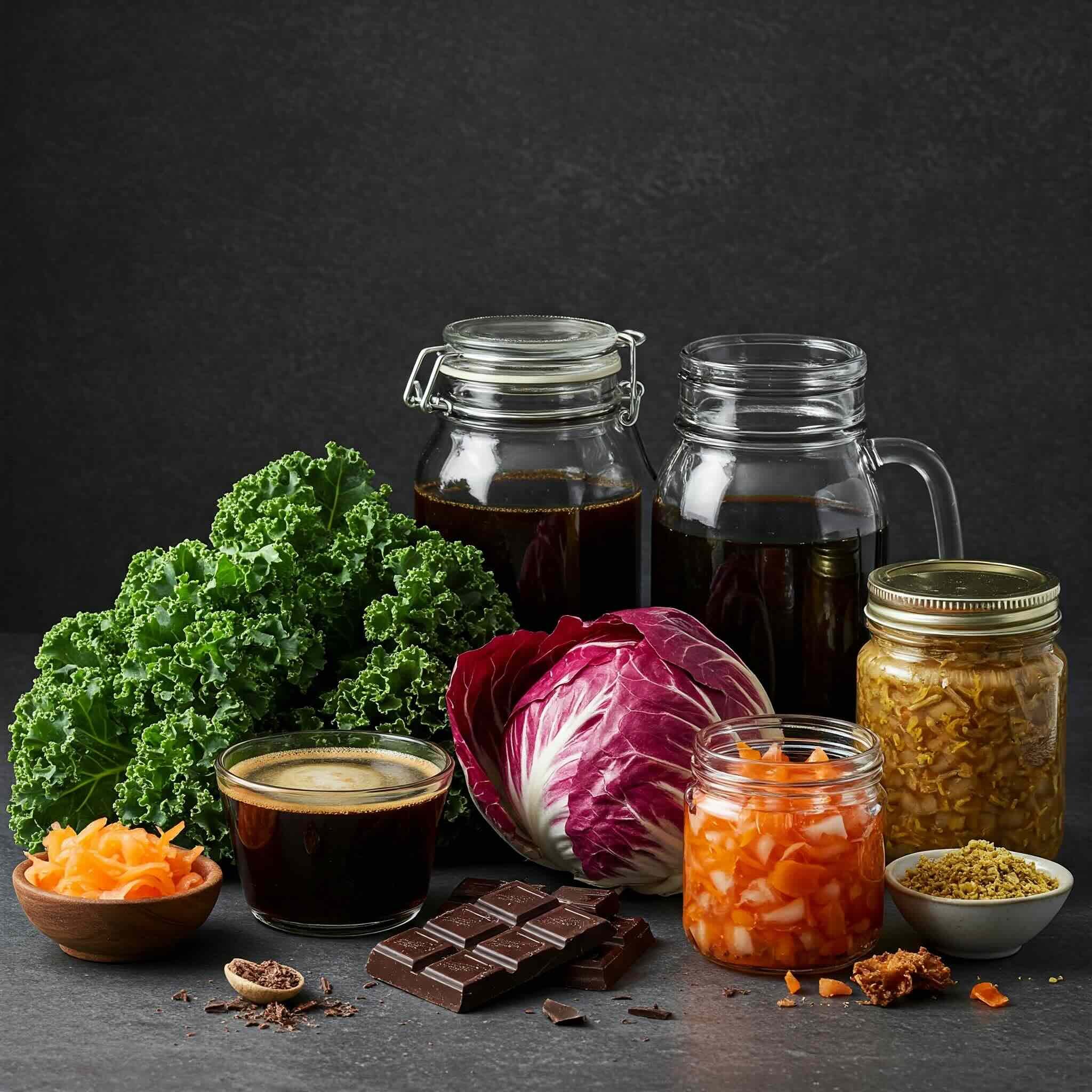The Essential Role of Bitterness in Plant-Based Eating
The Essential Role of Bitterness in Plant-Based Eating – Why It’s a Secret Flavour Weapon 🍃
Bitterness is often misunderstood. While many people naturally gravitate toward sweet or salty foods, bitter flavours add depth, balance, and complexity to a meal.
In plant-based cooking, bitterness plays a crucial role—it enhances contrast, makes dishes more satisfying, and even supports digestion. Let’s explore how embracing bitter foods like dark greens, cacao, and fermented ingredients can transform your meals. 🌱
🌿 Why Does Bitterness Matter in Cooking?
Bitterness is one of the five basic tastes, alongside sweet, salty, sour, and umami. While many cultures naturally incorporate bitter elements into their diets, others shy away from it—likely because bitterness is associated with toxicity in nature. However, in the right amounts, bitterness balances richness and enhances flavour.
🔥 The Key Benefits of Bitter Flavours:
✔ Enhances contrast – Balances sweetness and richness for a more complex dish.
✔ Deepens flavour layers – Adds sophistication and intrigue to plant-based meals.
✔ Aids digestion – Stimulates digestive enzymes and supports gut health.
✔ Reduces cravings – Helps curb excessive desire for sugary foods.
✔ Adds natural complexity – Makes plant-based meals taste more dynamic and satisfying.
🥬 The Best Bitter Ingredients in Plant-Based Cooking
🍃 Dark Leafy Greens: A Nutrient-Dense Powerhouse
Bitter greens are one of the most well-known sources of natural bitterness. The more mature and fibrous the leaves, the more pronounced the bitterness. Popular bitter greens include:
Kale – Slightly earthy and rich in nutrients.
Dandelion Greens – Intensely bitter but excellent for digestion.
Radicchio – A colourful Italian chicory with a bold bitter punch.
Brussels Sprouts – Roasting them reduces bitterness while enhancing depth.
Mustard Greens – Peppery and bold, perfect for sautés and salads.
🔥 Pro Tip: Pair bitter greens with citrus or a little sweetness (like balsamic vinegar or maple syrup) to balance their flavour.
🍫 Cacao & Dark Chocolate: A Bold, Bitter Sweetness
Cacao is naturally bitter, earthy, and complex, making it a secret ingredient in both sweet and savoury dishes. Key sources of cacao bitterness include:
Raw Cacao Powder – Deeply bitter, perfect for smoothies and baking.
85%+ Dark Chocolate – Intense and rich, with natural plant-based antioxidants.
Cacao Nibs – Crunchy, unsweetened, and ideal for adding depth to dishes.
🔥 Pro Tip: Try adding a small amount of cacao powder to chilli or tomato-based sauces for an unexpected umami-rich depth!
🥒 Fermented Foods: A Funky, Complex Bitterness
Fermentation enhances natural umami and often introduces a subtle bitterness, making foods taste more mature and layered. Some plant-based bitter fermented foods include:
Kimchi – A spicy, tangy, umami-rich fermented cabbage.
Sauerkraut – Fermented cabbage with a refreshing, slightly bitter tang.
Kombucha – A probiotic-rich tea with sour, sweet, and bitter notes.
Tempeh – Fermented soybeans with an earthy, nutty bitterness.
🔥 Pro Tip: Use kimchi or sauerkraut as a topping for grain bowls to add bitterness and brightness in one bite.
☕ Coffee & Tea: A Pleasant Bitterness
Bitterness is a defining trait of coffee and tea, and both are beloved worldwide for their complexity and balance. Common bitter beverages include:
Black Coffee – Naturally bitter but can be balanced with plant-based milk.
Green Tea – Mildly bitter with fresh, grassy undertones.
Matcha – A Japanese powdered tea that’s strong, earthy, and rich.
Dandelion Tea – A caffeine-free herbal tea with digestive benefits.
🔥 Pro Tip: Use matcha or coffee in savoury plant-based sauces for an unexpected depth of flavour!
🍽️ How to Balance Bitterness in Plant-Based Cooking
While bitterness adds depth, using too much can overpower a dish. The key to harnessing its power is balance.
✅ 3 Easy Ways to Balance Bitterness:
1️⃣ Pair with Sweetness – Maple syrup, coconut sugar, or balsamic vinegar can mellow bitterness.
2️⃣ Use Fat – Olive oil, tahini, and avocado soften harsh bitter notes.
3️⃣ Add Acidity – Lemon juice, vinegar, or tamarind balance bitterness beautifully.
🔥 Pro Tip: Sautéing bitter greens in olive oil and garlic reduces their intensity while keeping their complexity intact.
🌎 How Different Cultures Embrace Bitterness
Bitterness is celebrated in many global cuisines, often as a way to enhance depth and complexity:
Italy – Radicchio, espresso, and bitter aperitifs like Campari.
China – Bitter melon, strong teas, and dark soy sauce.
Japan – Matcha and bitter greens in savoury dishes.
India – Fenugreek, turmeric, and bitter gourd in curries.
Thailand – Bitter greens paired with spicy and sour elements.
🔥 Lesson: Learning how different cultures balance bitterness can expand your plant-based cooking skills!
🌟 Final Takeaway: Bitterness is a Secret Flavour Weapon
Bitterness isn’t something to avoid—it’s something to embrace and master. By incorporating bitter greens, cacao, fermented foods, and strong teas, you can create bold, flavourful, and deeply satisfying plant-based meals.
Experiment with bitterness, balance it wisely, and watch your cooking reach a whole new level of depth and complexity! 🚀

